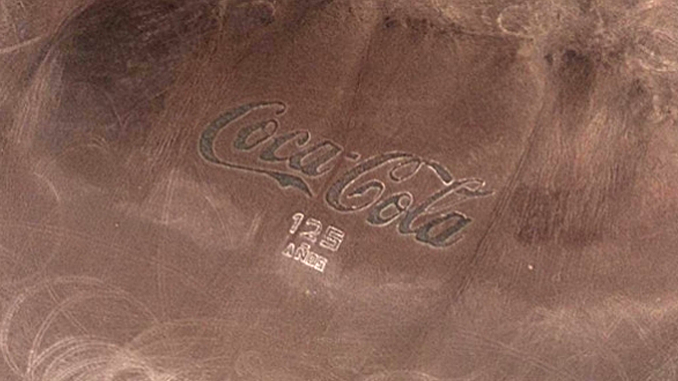
Coke has always come in a variety of sizes. There was the 6 1/2 ounce bottle, the 8 ounce bottle, there’s a 7 1/2 ounce can, 12 ounce cans and bottles, 16 ounces, 20 ounces, 1, 2 and even the “emergency bludgeon” 3 liter bottles. Factor in fountain drinks and a thirsty person can get a coke in just about any size they want.
For a coke logo, though, they can go even bigger. They just have to go to Chile.
In 1986, before satellite imagery was commonplace, a bottling plant outside of Arica, Chile decided to celebrate the 100th anniversary of Coca-Cola by burying 70,000 empty glass bottles upside-down in the side of a large hill in the desert.
Every associate of the bottler was divided into teams corresponding to each letter of the Coca-Cola logo. The teams arranged each bottle carefully, sinking enough of the bottle into the ground to secure it while leaving enough above the surface to reflect light.
Coca-Cola Journey
The logo is so large that it’s recognizable only from great distances on a clear day, or from the air. For years, the primary viewers of the “billboard” were pilots and air passengers. That was before Google Earth breathed new life into it, because the logo is large enough to be visible from space.
But it’s not quite the logo it was. Back in 1986, the logo was completed with a final bottle from plant worker Miguel Fuentes Zagal. In 2011, an addition was completed. After all, it was no longer a 100 year anniversary; 2011 saw “125 Anos” (125 years) placed underneath. Rather than detract from Zagal’s notoriety as the final bottle, however, the effect was additive; the final bottle in the update was place by Miguel Fuentes Martinez, Zagal’s son.
Question of the night: What’s your favorite non-alcoholic drink?
